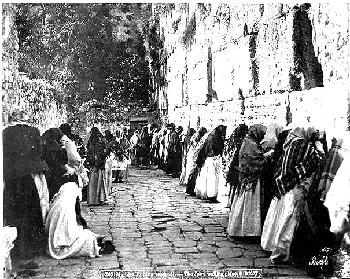This week begins the three weeks of mourning for the Jewish Nation. It is a time of intense sadness and inner reflection regarding the events that led up to the destruction of Jerusalem in general, and the Holy Temple in the heart of Jerusalem specifically. These weeks culminate with Tisha B’Av (the 9th day of the month of Av). This article explains more…
The Three Weeks
Article Courtesy: My Jewish Learning
The three-week period in summer that begins with the fast of the 17th of Tammuz and climaxes with Tisha B’Av is known simply as “The Three Weeks.” It is a time of grieving for the destruction of both the First and Second Temples in Jerusalem. This mourning period was first mentioned in the biblical Book of Zechariah in the Prophets — and, since then, it has been observed as a period of sadness.
The Multiple Tragedies
The 17th day of the Hebrew month of Tammuz is a date in which many tragedies and pitfalls happened, according to the Mishnah (Taanit 4:6). It is traditionally believed to be the date that Moses broke the original Ten Commandments tablets after coming upon the Israelites as they worshiped the Golden Calf. The Roman rulers forbade sacrifices to be made in the Second Temple on this date in 69 C.E., and, in the following year, the walls of the Old City of Jerusalem were breached. This attack led to the destruction of the Temple three weeks later.
In Hebrew, the period of the Three Weeks is known as “bein hametzarim,” or, literally, “within the straits” or “within the borders.” This name comes from a verse in the Book of Lamentations, or Eicha, which is read on Tisha B’Av:
“Judah has gone into exile because of affliction, and because of great servitude. She dwelt among the nations, she found no rest; all her pursuers overtook her within the borders.” (Lamentations 1:3)
This idea of borders — or “restrictions” — alludes to the additional restrictions of mourning which are traditionally taken on during this period.
Traditionally, Jews take on several mourning customs during the Three Weeks. Similar to the period of the Omer, no weddings, parties, or public celebrations are held. Some people abstain from getting haircuts and shaving. Some people also refrain from going to concerts or listening to music during this period.
The Nine Days
The last nine days of the period, starting with the first of the month of Av, occupy a special status. Foods traditionally associated with joy, such as wine and meat, are forbidden, except on Shabbat. Bathing, beyond what is absolutely necessary, is prohibited, as is doing laundry, and buying or wearing new clothes.
This culminates in the fast of Tisha B’Av, the Ninth of Av, a day that is spent entirely in mourning–by fasting, praying, sitting on stools instead of chairs, and reading the book of Lamentations. The Mishnah, in Masekhet Taanit 29b, decrees that these additional restrictions are only valid in “shavua she-hal bo,” or the week that Tisha B’Av occurs. Many Sephardic Jews only observe the restrictions within this period.
“Decreasing … in Joy”
Even though the Three Weeks mark the time of the Temple’s destruction, there are signs of hope throughout. The three haftarot read during this period, are full of admonitions and prophetic passages that warn about the consequences of sin. Yet each ends in a promise of eventual redemption.
The Talmud says, “When the month of Av enters, one should decrease in joy.” The Hasidic rebbe Rabbi Chaim Elazar Spira (1861-1937), said that, though the Talmud says to “decrease in joy,” it should be read, “decrease… in joy.” In other words, though it is proper to mourn, even in that mourning, we should do so joyously, knowing that better times are ahead.
Read the Full Article

 Join Now
Join Now Sign Petition
Sign Petition Tell Friends
Tell Friends








